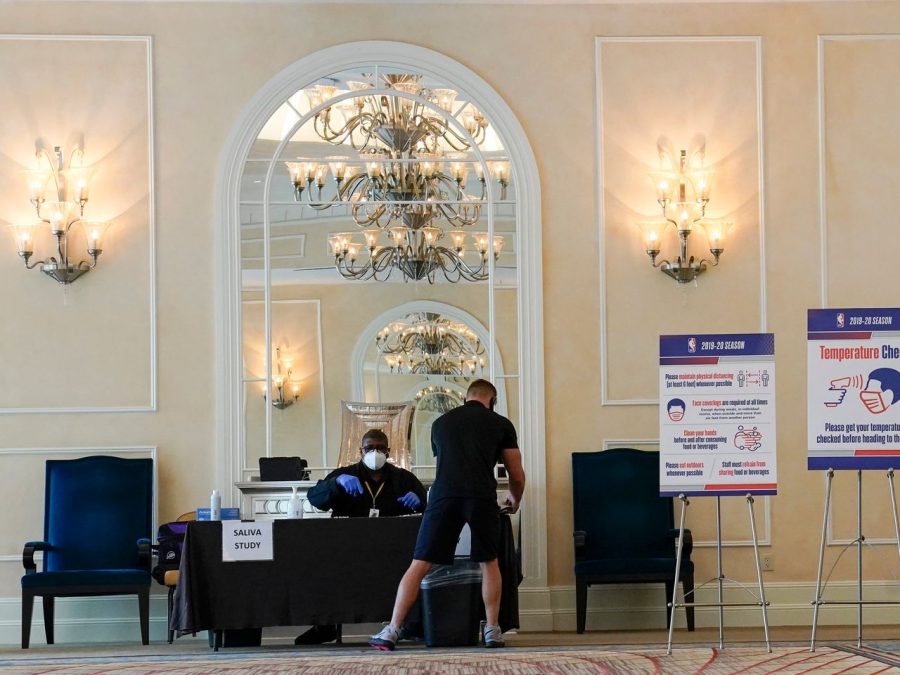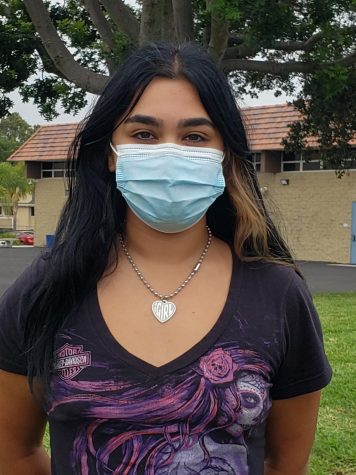The success of swabs: The NBA bubble’s success in keeping players safe
December 9, 2020
Life in the United States was completely altered when the coronavirus pandemic first hit. As schools and businesses closed, the country came close to a complete shutdown. The world of professional sports had to go to a full stop as well. On March 11th, 2020, the National Basketball Association (NBA) came to an abrupt halt in the middle of their season because of the ongoing pandemic.
Resuming on July 30th, matches this season were based in the Entertainment and Sports Programming Network’s (ESPN) Wide World of Sports complex, an isolation zone on the campus of Walt Disney World in Orlando, Florida. The NBA had devised a comprehensive plan for the restart of the season, including stringent health and safety protocols.
“When the idea was first broached, it didn’t sound logistically realistic,” NBA commissioner Adam Silver told USA Today.
Silver continued, saying, “It wasn’t until I began my discussions with Bob Iger (Disney executive chairman) that there appeared a realistic geographical footprint with 22 teams where we could create an environment; where we wouldn’t be secluding people in a hotel tower for multi-months.”
Upon entering the Orlando bubble, the players, coaches, and staff of all 22 invited teams were put under a strict 48-hour quarantine and were tested daily. After clearing the quarantine period, coaches and players were allowed to move freely within the resort areas. However, even after the quarantine period ended, everyone present at the facility, including the players, was subjected to daily COVID-19 testing. Players were also able to stay on campus until the end of their respective seasons. If they left, they could not be allowed back in unless they quarantined for 14 days or longer.
Dr. John Swartzberg, an infectious disease expert and professor at the University of California, Berkeley, tells Popular Mechanics that the NBA had, “two of the most powerful public health tools. One, they test everybody every day, and so if someone gets infected, they can immediately remove them.”
Dr. Swartzberg also emphasized that “ they’re [the players] socially distancing. They’re in the bubble and their contact with other people is strictly enforced”.
No players tested positive throughout the season after entering the Orlando bubble. The NBA regular season and playoffs were successes and became a model for operating a safe environment, following safety guidelines and protocols. After months of isolation and thousands of COVID-19 tests inside the Orlando bubble, the season came to an end when the NBA crowned the Los Angeles Lakers champion.
“We had zero positive tests for as long as we were here – 95 days may be formed,” Los Angeles Lakers, LeBron James told USA Today.
“I had a little calendar I was checking off. But on a serious note, no positive tests. That’s a success for everybody that was involved,” said James.
Despite the success the bubble has had for the NBA, it may be difficult for other major sports leagues and college sports to replicate its success. When the Coronavirus pandemic hit near the end of the NBA’s season, they only needed to play a few games. Additionally, compared to those of other major sporting leagues, NBA rosters are relatively small. Only 17 players were allowed to enter the bubble from each team, and only a total number of 35 people are allowed inside, including the players and the coaches.
The National Football League (NFL) and Major League Baseball (MLB) have larger rosters than the NBA. For example, each team has an enrollment of upwards of 60 players, plus coaches and staff with professional football. Also, the NFL is playing a full season, which would make it near impossible to isolate for the duration of the whole season. Similarly, the MLB’s roster is larger than that of the NBA, and they would have to be separated for an entire season.
MLB officials attempted to enact a “virtual bubble” around each player by setting up guidelines and restrictions for players similar to those of the NBA. However, this was not very successful since individuals ignored the rules, which proved detrimental in this size league. Another reason why the “virtual bubble” was not very successful was the league’s inability to completely isolate themselves since a bubble of this size would be very costly.
In addition to large rosters and long seasons, college sports will face financial problems if they attempt to replicate the NBA bubble. According to ESPN, the NBA bubble cost upwards of 150 million dollars since regular testing and a wholly isolated campus are very costly. Colleges and universities cannot keep players in a bubble unless they have the financial resources to do daily testing, making it difficult to safely move forward with sports seasons.
Meanwhile, the National Hockey League’s (NHL) bubble was almost as successful as the NBA bubble. This was mostly due to the NHL’s shortened season and the league’s overall small team rosters that allowed for a safe season.
The NBA 2020-21 season is fast approaching, and the NBA is devising a plan for the new season to keep the players safe. Although the NBA bubble proved to be a massive success for the 2019-20 season, it might be hard to replicate in the future.
Photo courtesy of The Wall Street Journal





